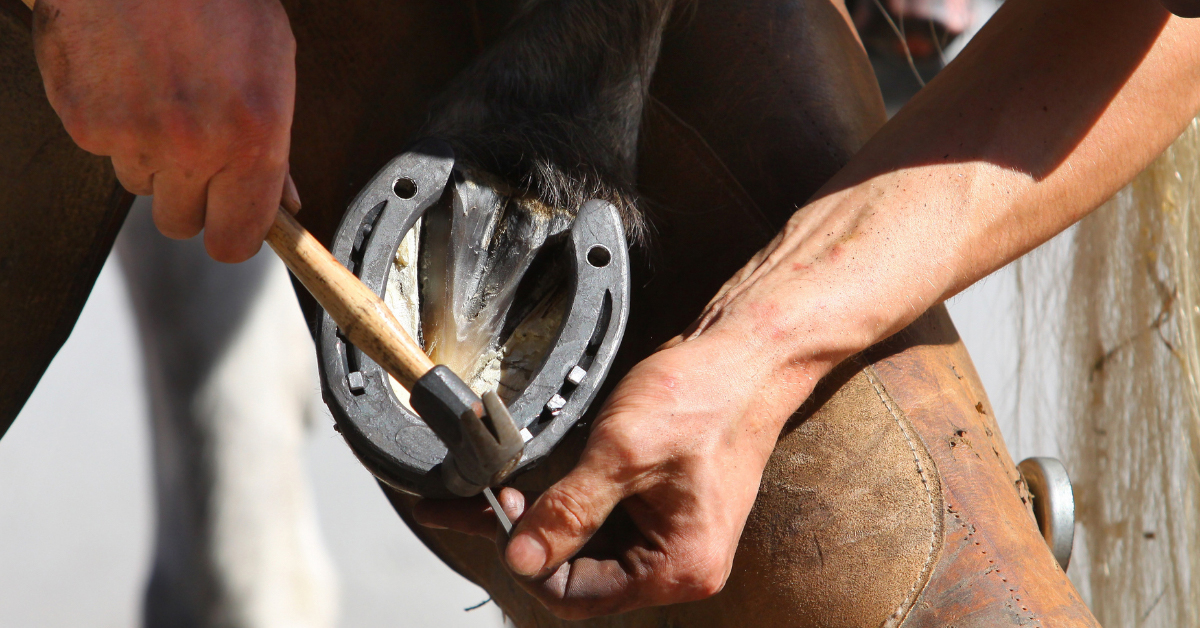Horseshoeing has been there for centuries, primarily as protection for a horse’s hooves and improved performance on different surfaces. Horseshoes are traditionally always famously known to bring good fortune, but they are also practical in the way they serve to maintain healthy horse hooves. Its designs do not change and have emphasized the importance of horseshoes in equine care.
But are horseshoes required these days? That is another very much-debated question between owners of the horse and professionals. However, the requirement for shoeing varies with the individual circumstances, which include the horse’s workload, the environment in which they live, and the owner’s choices. Some horses, particularly those working on hard grounds or stony lanes, would fare much better with the shoes, while the others might do as well without them.
In summary, horseshoeing is one decision that is pretty vague and dependent on the individual requirements of each horse. Owners must, therefore, seek advice from the various equine professionals on how best to take care of the hoof of their animal.
What are horseshoes?
Horseshoes are artificially made U-shaped piece used to protect and hold the hooves of a horse. They have been used since time immemorial to help horses do many different kinds of labor. A horse fitted with shoes is termed a “shod horse,” and without shoes, it is called “unshod” or “barefoot.”
Most horseshoes are usually made of metals, primarily steel or aluminum. Other horseshoes materials include rubber, plastic, and copper. They are nailed to the bottom of the hoof. A decent farrier can insert the nails without causing any pain to the horse, just as cutting your fingernails does not hurt. Sometimes, if a horse is only required to wear their shoes for a short time, then they will be glued instead.
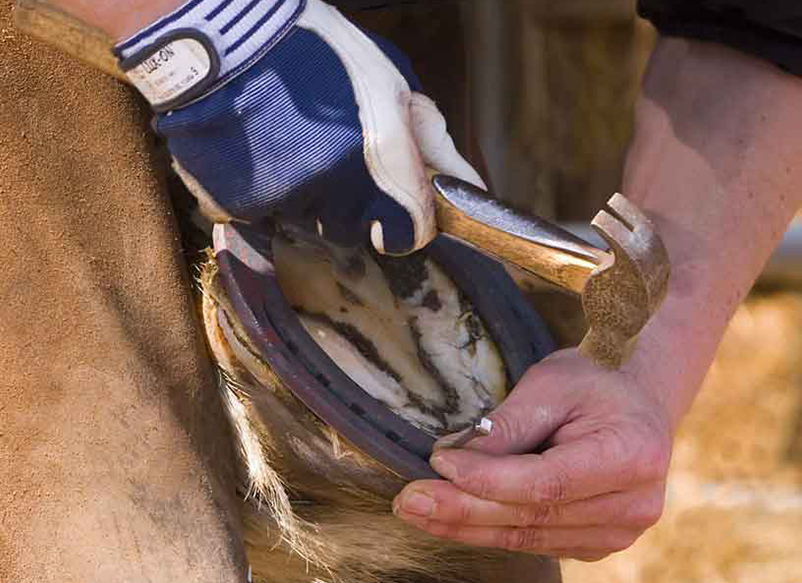
Why do horses wear shoes?
Horseshoeing is beneficial for protecting a horse’s hooves and feet, preventing damage and excessive wear. Where our nails must be trimmed regularly, a horse’s hooves grow continuously and hence must be trimmed constantly. Wild horses are worn down by walking on hard, dry ground, but domesticated horses, ridden or used to pull heavy loads, wear their hooves more quickly because of the extra weight and workload. In turn, the strength and durability provided by horseshoes ensure that the hooves stay healthy and not worn out.
They also offer added protection from cuts on hard or stony ground. They can stop the hooves from softening up due to wet or muddy conditions, which often proves quite useful in wet climates. Also, horses that are engaged in high concussion disciplines—like racing, jumping, or cross-country events—will appreciate the additional shock absorption and protection that the shoes can offer.
That said, horseshoes could have other uses other than serving for hoof protection. For instance, they could be used as:
- Traction: Horseshoes help to better the animal’s strength and hold on smooth surfaces such as when the ground is wet and muddy. There are also some particular shoes fitted with feet to help horses walk on icy surfaces without slipping.
- For balance: Some horses may be weak in the area of balance. Corrective shoeing by an expert farrier will provide support to areas of the hoof where help is most needed, correcting such balance deficiencies.
- For medical reasons: Some medical conditions, such as laminitis, arthritis, or ringbone, will weaken a horse’s hooves and feet. The horseshoes in such a case provide extra support, keeping the animal comfortable while continuing their work safely.
Horseshoeing can also be customized for the peak performance of a horse depending on the particular needs it may have. While one Clydesdale pulling a carriage on hard roads will need heavy-duty shoes, another show pony working in a soft arena may require lighter footwear. An experienced farrier will, therefore, devise the appropriate horseshoeing style to fit the breed of the horse and the kind of work done.
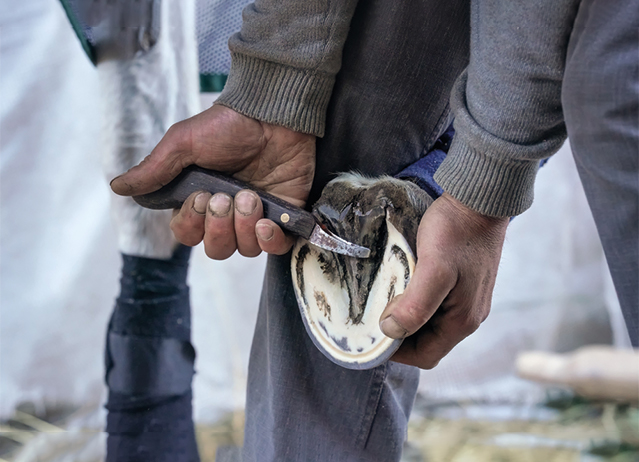
Do all horses need shoes?
Whether all horses need shoes or not is a hot topic, and opinions vary widely among horse owners and trainers. While horseshoeing has its advantages and disadvantages, what works for one horse may not work for another. Suffice it to say, it depends on the situation and who you ask!
The decision to shoe a horse is personal. Most riders and trainers believe horses need shoes most of the time because they offer protection for their feet during work. They argue that these horses perform much better, sound healthier, and seem to work more effectively than their counterparts without shoes.
However, some experts argue that many horses, especially sport horses, do not need shoes at all. They believe that proper hoof trimming and a balanced diet can keep a horse working just fine without shoes. Most barefoot advocates oppose shoeing horses at all times, even for correctional purposes.
Others take a balanced view and say that horseshoeing depends on what the horse is doing. For instance, some riders find that barefoot horses are more agile for training, but they may still require shoes for tougher trails or harder ground. Horses involved in high-impact activities, such as cross-country, often face too many risks when ridden barefoot, as they require the extra protection and grip that shoes provide.
Even a barefoot horse is not exempt from having its hooves trimmed. Like our nails, their hooves continually grow and need to be shaped. Only wild horses do not require trimming; they live on rugged terrain and naturally wear down their hooves through exercise. Ultimately, the choice of horseshoeing should consider each horse’s individual needs and circumstances.
Equine enthusiasts are very passionate about the issue of how to take care of their animals; therefore, this argument becomes very emotionalized about shoeing. However, most people should state that it depends upon the horse itself, on its surroundings, and on what work the horse is meant to do. After all, it’s the owner, in consultation with a vet or any other expert, who knows what will be best for their horse.
Do racehorses need shoes?
Although racehorses do not need to wear shoes to compete, nearly all of them do. Even though racehorses are running on softer ground, the force with which their hooves hit the ground when running is enormous. Such an impact might be rough on the feet, so shoes are made to protect them.
Most racehorses nowadays wear specially designed aluminum shoes. These are lighter than the traditional steel shoes but offer excellent protection to the feet. Since races are often won or lost by a fraction of a second, light aluminum shoes can enable a horse to run faster and acquire a better stride. However, most owners go with nailed-on shoes, while others use glue-on shoes. This versatility in horseshoeing allows owners to choose what best suits their horse’s needs for optimal performance.
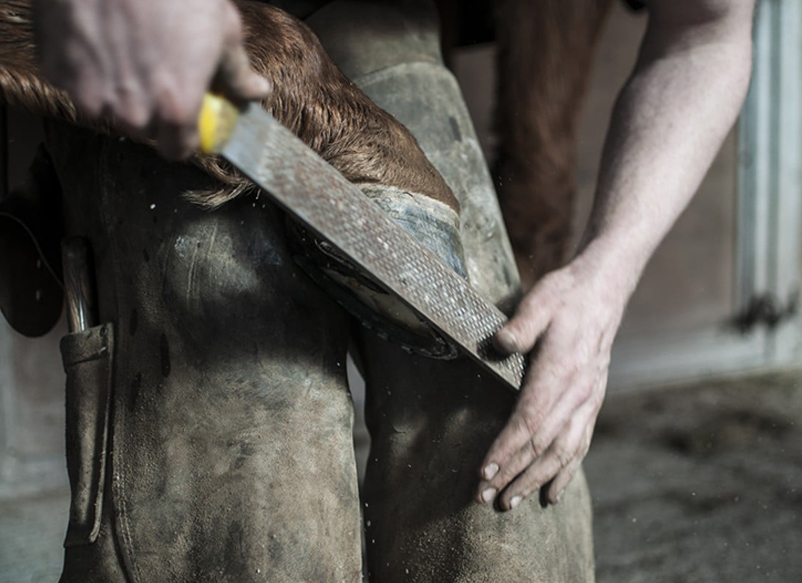
The pros and cons of shoeing a horse
We understand the arguments for and against horseshoeing, but what are the principal arguments on either side? This is a balanced breakdown of pros versus cons concerning shoeing a horse so that you might have an easier decision to make on what is good for your horse.
Pros of Shoeing
- Shield: Horseshoes make horses’ hooves stronger and tougher, which minimizes the chances of getting wounded while riding on hard grounds or doing heavy work.
- Wear Rate Reduction: Horseshoes help to slow down their hooves wearing important rate, especially for horses carrying lots of weight like the ones pulling carriages.
- Enhanced Performance: Many riders report better performance with their horse’s shod, particularly in high-impact disciplines like jumping and cross-country. Plus added grip and support for the horse`s performance.
- Correction of Problems: Corrective shoeing may help to correct certain ways that a lame horse steps. Along with this; this process will address any severe chips or cracks in the hoof wall.
- Medical Assistance: In case a horse has arthritis, ringbone, or laminitis among other health conditions, shoeing is very necessary. This helps them to stay pain-free as well as remain active because they offer an extra brace to keep them comfortable.
Cons of Shoeing
- It will cause an increased risk of injury: If the farrier is massaging a bad hoof or high nails, “rouge” nails can go over sensitive perspire horned hinny. If a horse “springs” (throws) his shoe during work, it can lead to a tendon sprain or tearing the hoof wall.
- Costlier: As compared to simple trimming shoeing is more costly.
Pros and cons of going Barefoot
Pros of going Barefoot
- More cost-effective: Trimming alone usually costs less than shoeing them, as you do not need to purchase horse shoes.
- Improved performance: Some riders have observed that their horses are less sore and perform better on the ground when being kept without shoes.
- More Natural: Wild horses don’t wear shoes and there is a common belief that the closer to a natural state, the better for horse wellness and comfort. However, that last does not necessarily mean it will be so for all horses.
Cons of going Barefoot
- More prone to injury: Even with proper hoof care and a healthy diet the horse foot is at risk of stone bruises or other injuries that could occur in work. But this is true for shod horses as well, too: neither choice guarantees complete prevention from the chance one might get hurt.
- Regular inspection and adjustment may be necessary: Owners of barefoot horses must pay very close attention to the hooves, which requires quite a bit of time.
- Extra protection may still be needed: Even for horses that are used to being unshod, it may sometimes be necessary to add some extra protection or traction in certain circumstances. This might be in the form of temporary shoes or boots when competing or hacking in very wet or muddy conditions or on very hard or icy ground.
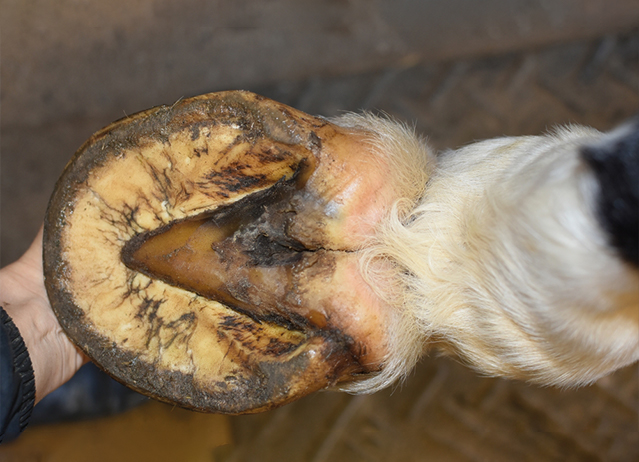
Essential Horseshoeing Tools for Proper Hoof Care and Maintenance
Proper hooves and shoe fitting require a set of specific tools in horseshoeing. Key horseshoeing tools are hoof knives for trimming and cleaning, nippers are used to cut the hoof wall, and rasps to smooth rough edges. Similarly, the farrier’s hammer plays a crucial role in shaping and forcing the nails into the horseshoe. This will determine the right fit for the shoe, while the design of horseshoes varies according to different requirements. Hoof testers are also used while checking on the hooves’ health; however, a glove is used for grip and to protect while in the process. In summary, all these different horseshoeing tools enable farriers to keep the hooves healthy.
How do wild horses manage without horseshoes?
Wild horses do okay without hoof trimming and maintenance because they’re running on hard and textured terrain all the time, which acts as a natural way to wear down their hooves.
Eventually, The choice of whether you should shoe your horse is highly personal – and depends on many factors. Seek professional advice and do your thorough research.
Nonetheless, we hope that you have learned a thing or two about why you will find many horses in horseshoes and what good they have about them.

